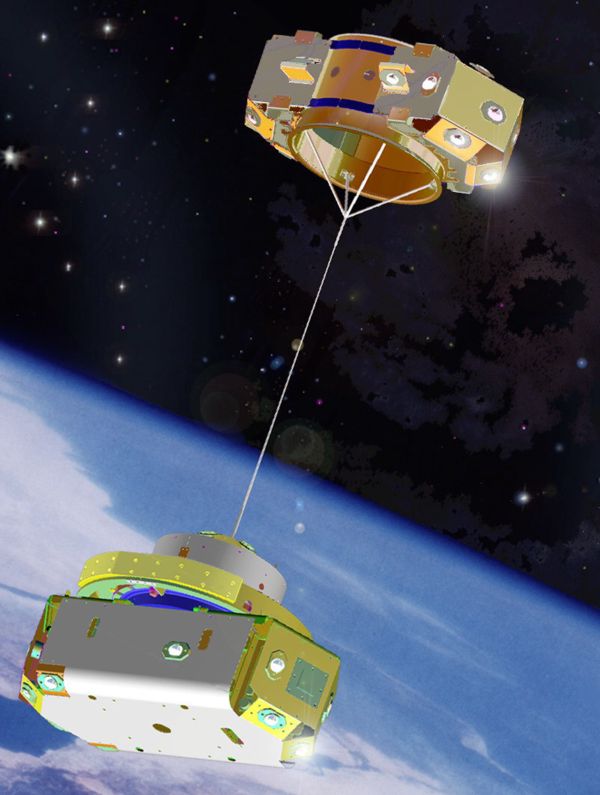Over ten years ago, I attended a conference where there was a presentation on tethers for moving things around in space. I was fascinated. We tend to think in terms of powerful rockets for our current space propulsion and maybe someday warp drives that can overcome the speed of light. But here were people talking about using long cables to move things around in space. There are a number of different things that can be done with tethers.
One application for tethers is referred to as electrodynamic tethers. This idea makes use of the magnetic fields of the Earth. Basic electric theory says that a conductor with a current flow moving through a magnetic field will experience a physical force. By dangling a long tether from a satellite and running a current through it, it is possible to use the force created by the Earth's magnetic field to impart a force to the tether which is transferred to the satellite. Run the current one way and the satellite is slowed down. This will move it to a lower orbit. This is useful for what is called deorbiting or causing a satellite to fall out of orbit and burn up in the Earth's atmosphere. Run the current the other way and the satellite can be pushed up into a higher orbit.
Tethers must be strong and light. They may be coated to protect them against atomic oxygen in the upper atmosphere and against ultraviolet light, both of which can degrade them. There is also the problem of micrometeorites damaging the tethers. Various polymers, fibers, composites and conducting wires are now used for tethers. In the future, carbon nanotubes look promising with their extreme strength and very low weight.
Momentum exchange tethers can latch onto a satellite or package and, rotating up or down, move it from a higher orbit to a lower orbit or from a lower orbit to a higher orbit. They can also pick up and deliver packages from the ground to orbit or from orbit to the ground. This application is referred to as a sky hook. And they allow an orbiting satellite or spacecraft to flung out of the Earth's gravity well altogether.
With tether formation flying, tethers can be used to adjust the position of each satellite flying in a formation of satellites so a particular configuration can be maintained.
Electrodynamic tethers can also be used to impart momentum to a spacecraft by interacting with the solar wind streaming out from the sun.
Perhaps the most ambitious use of space tether ideas was first proposed by a Russian in 1985. He pointed out that if a cable could be dropped from geosynchronous orbit down to the Earth and rotate with the Earth, materials and equipment could be sent to and from geosynch orbit with an elevator. This idea came to be called a space elevator and there is a Japanese company that has announced plans to try to build one by 2050.
Tethers were all the rage years ago but as time went by, research stalled and projects and grants were cancelled or never awarded. Currently tethers are not a big part of the budding space industry but with the passage of time, development of material science and experience in space flight, tether may yet achieve a new popularity and many applications.
Graphic of the US Naval Research Laboratory's TiPS tether satellite:
